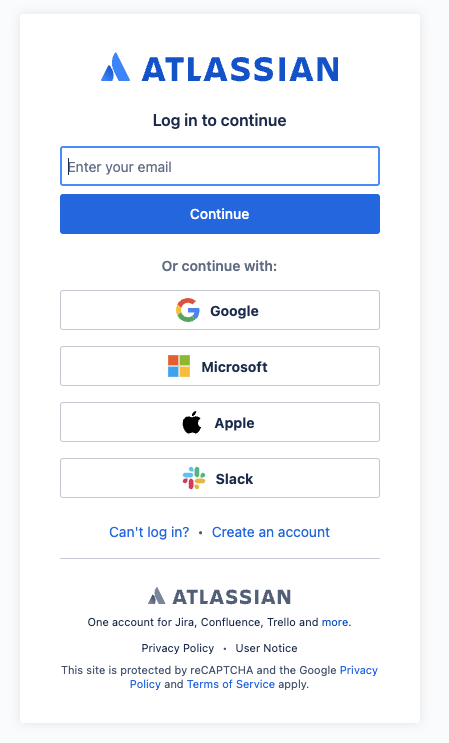What are the differences between "Continue with Microsoft" versus SAML SSO?
Platform Notice: Cloud Only - This article only applies to Atlassian products on the cloud platform.
Environment
Atlassian Cloud
Atlassian Guard
Azure AD SAML SSO with Atlassian Cloud enterprise application
SSO enforced authentication policy
Context
Users have several options when logging into Atlassian Cloud with their Atlassian Accounts. In cases where the Atlassian Organization has SAML SSO configured using Azure AD, some users may mistake it for the "Continue with Microsoft" option. This article seeks to address all the different options.
Summary
When unauthenticated users visit their site URL (Confluence, Jira, etc.) they will be redirected to https://id.atlassian.com/login, the user will then encounter the following screen:

Depending on the user's action, different outcomes may occur:
If the user is part of an Authentication Policy with SAML SSO enforced and clicks on Continue:
The user will be directed to your IdP (Azure AD) for authentication using SAML.
If the user is part of an Authentication Policy with SAML SSO enforced and clicks on continue withMicrosoft:
The user will be redirected to Azure AD to use their Microsoft Account for authentication.
This process utilizes the OAuth2.0 protocol not SAML, however if the SAML identifier is email it will match the OAuth identifier and kick SAML authentication
It's important to note that an Azure Enterprise Application named ‘Atlassian’ will be created to facilitate this login method;
This is a different application to the Atlassian Cloud Enterprise Application
The application needs to be approved by an admin, if you want to block the use of this other application you can also decide to modify the Assignment required? to Yes, this will result in the following error to be shown to users during authentication if the continue withMicrosoft option is used:

Refer to Log in with a third-party account for further details.
If the user is part of an Authentication Policy without SAML SSO and clicks on Continue:
The user will be prompted to enter a local Atlassian Cloud password
If the user is part of an Authentication Policy without SAML SSO and click on continue withMicrosoft:
The user will be redirected to Azure AD to use their Microsoft Account for authentication.
However, because the user is not part of the SSO enforced authentication policy or SAML is not configured in the organization, the OAuth workflow will continue
Same principals to approving the application apply in this use case
Was this helpful?